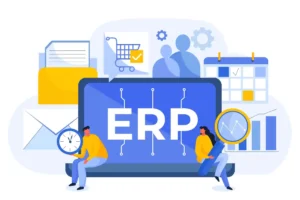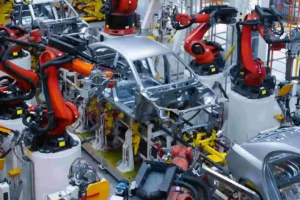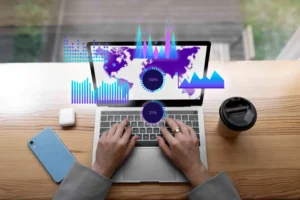What opportunities is your restaurant missing out on just because you are afraid of change?
The past few months have shown us that businesses cannot continue operating with their old models. During times of disruption and uncertainty, speed and agility become necessary for survival. Restaurants have discovered that they need to be able to adopt new models of food delivery, quickly. They must be able to make staffing changes at the last minute. To substitute ingredients and dishes depending on what’s available. To calculate costs and optimize purchasing, factoring in limited seating, reduced opening hours, and shifting consumer habits.
Traditional technology can’t support these levels of agility. Restaurants need to start their digital transformation, quickly, and they need to focus on building intelligence into the business. According to a study by IDC, companies that center their digital transformation on intelligent technology improve their productivity, drive cost efficiencies, and have 8 times the revenue and twice the profitability as non-digitally transformed enterprises.
6 practical benefits of analytics in your restaurant business
With the new generation of intelligent analytics, businesses don’t need a team of data scientists to gain insights and wade through data. Cloud-based intelligence-powered analytics is accessible to most restaurant businesses, and can provide tangible benefits.
An Artificial Intelligence (AI) powered analytics and reporting software can enable businesses to:
– Find meaningful patterns across vast amounts of data. Perhaps you’ll see that your mall location gets more customers when it rains, or that your downtown location sells more wine glasses, but fewer beers, when the main of the day is steak.
– Optimize ingredient ordering. Historical consumption patterns can help you predict how much you’ll sell next week. The system can also help you calculate what you need to order.
– Decrease waste. Once you figure out that your portions of sauce are too big and mostly end up in the can, or that selling wines by the glass on weeknights ends up in a lot of waste, you can take steps to cut your losses.
– Optimize stock usage and distribution. At some point, it might make business sense to move the content of your freezers from a location in a mall that is seeing low foot traffic to one that is still doing good business.
– Engineer the right menu. Are there any unpopular dishes on your menu that are costly, or complex to produce? Are your most popular dishes providing you with healthy margins? Could you do more to sell your highest-revenue dishes? An analytics software can help you make design a menu that is better aligned to your guests’ tastes while also giving you more in return.
– Simplify staffing. An analytics software can help you see whether you have too many or too few staff members working in a location at a specific time, making better use of their time and of your resources.
“There’s a value in being prepared for the future. Even if a technology may not drive clear returns today, if it puts you in a position to be able to respond to changes, then it’s worth it.”
Leon DeWet
Former restaurant CIO
4 tips from a restaurant CIO
Leon DeWet is a former restaurant CIO, and a strong believer in the power of analytics. DeWet was a CIO in restaurant chains the likes of Cracker Barrel and O’Charley’s for 28 years. During his time in the industry, he saw technology transform both the restaurant business and consumer behavior. He saw trends, short-lived fads, and at times, truly revolutionary technology. Analytics, in his opinion, belongs to the last category.
DeWet shared with us four tips for restaurant executives who want to make the most out of intelligent analytics and reporting.
1. Find the small drivers of benefits
“Analytics can be a powerful tool to find the small changes in behavior, or in processes, that can drive huge benefits. While you still need to keep your eye on traditional big drivers, like the number of labor hours you’re spending or the number of guests, if you can, dig deeper to find out what is driving those numbers.
Why those small changes can you see taking place? How do you influence them? How do you shift them? Looking at these details can have a big impact on the bottom line.”
2. Adjust your metrics to a changed reality
“Don’t be blinded by what have historically been deemed ‘key metrics’ within the organization. Take, for ex, table turns. How fast you can turn a table only matters if you have guests to fill that table. Perhaps, if there are few customers you should rather focus on selling more to who’s already at the table.
Look at what’s happening in your business before you decide which metrics to focus on, keeping in mind some metrics might make sense in some parts of the day, but not at other times.”
3. Use analytics to predict, not just describe
“Too many restaurants are still too focused on using analytics in a reactive way. They look at the historical data to try and understand what has happened.
Instead, I think that the true value of analytics lies in their ability to help prepare for the future. Where is the business going to go? How do I intersect it ahead of time?
It’s important to also include external data, to intercept external behaviors that may have an impact on your business down the line. For example, if you see that the average miles driven by guests is going down, you need to stop, and understand what that is going to do to your customer base, what may have caused it, and how you can mitigate against it. Or if you are heading into hot and muggy weather, you should look how your sales and presences were affected in the past, and prepare. The AI can help you notice these kinds of trends and link them to other factors, so you can plan ahead.”
4. Think of technology as an investment in core infrastructure
“I think we need to change our mindsets. An investment in technology is no different than investing in the latest air conditioning systems, or the latest fry systems. You are investing in an infrastructure for your business that enables you to do business on an ongoing basis. You can’t wait until the demand is there before you make that investment. You need to be ready ahead of time.”
Becoming a business that operates on intelligence
Intelligence is necessary to restaurants – but it can’t simply be bolted on top of any software system as an afterthought.
To get the true value of intelligent analytics, the first step for restaurants is to get rid of their disjointed applications and move to a unified software solution that covers the entire business from kitchen, to purchasing, to point of sale to accounting. When all the data is collected within the same system in a consistent and reliable way, information can easily be crunched and analyzed to deliver the insights restaurant businesses so sorely need.
If you need help adding intelligence to your restaurant, contact us.
Note Blog Reference: LS Retail Official Web




